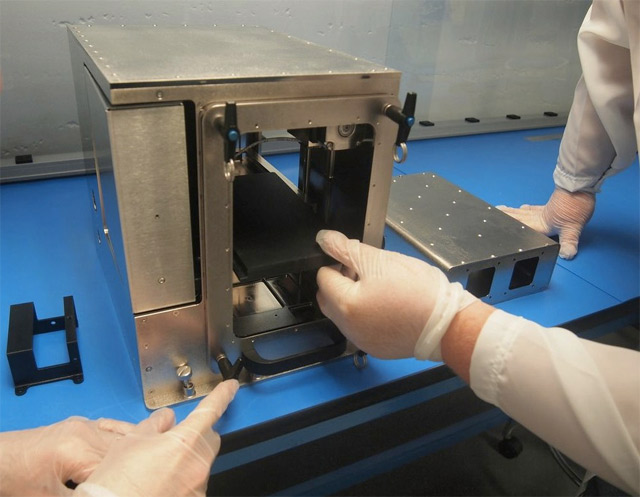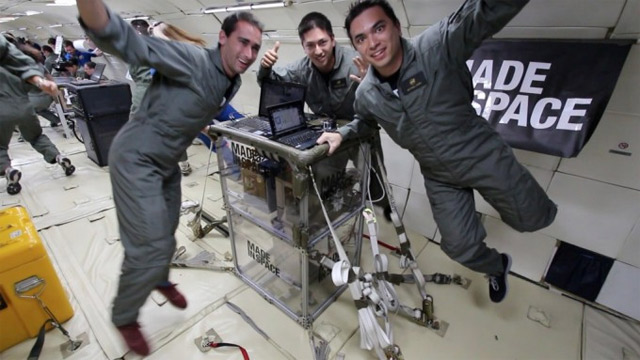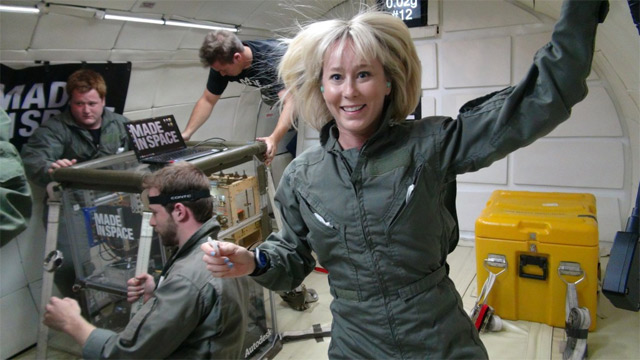3D printing opens the door to space colonization

Only in the Milky Way, the number of planets suitable for life, scientists estimate at 60 billion (according to the latest extended estimates). It is clear that with modern engines the flight will take millions of years, but in the long term the attenuation of the Sun colonization of other planets of the M-class seems to be the only possible way to develop civilization.
Anyway, before settling other systems, one has to master his own system well: for starters, the Moon and Mars. It is necessary to create permanent bases. According to experts , the key technology along this path should be 3D printing. With the help of 3D printers and robots, we will be able to create any objects on the lunar and Martian bases, successfully develop colonies by controlling the process from the Earth. With the help of 3D printing, we can collect interstellar ships right on the lunar and Martian bases, driving supplies there.
One way or another, 3D printers are the key technology for the successful implementation of space programs, the construction of alien bases and the colonization of other worlds. One of the companies that works in this area is Made In Space . Its goal is to develop a 3D printer that works fine under microgravity conditions on the International Space Station.
')
The cost of lifting cargo from Earth into orbit is estimated at about $ 22 thousand per kilogram. This is quite an acceptable cost for lifting the necessary building materials. If you still get something from asteroids that are brought into orbit , it will be even cheaper. And the main thing is that materials for production can be mined on the very same planet where the 3D printer is installed. Actually, not least for this reason, Curiosity is now conducting such a thorough analysis of the soil of Mars.
“Structures for space flights are currently being built on Earth,” says Dan Barry, a former astronaut and consultant to Made In Space, “so they must withstand terrestrial gravity, as well as vibration and overload, which accompany the launch into orbit. If you print structures in orbit on a 3D printer, they can be much more elegant, and in some cases not so durable to bear their own weight on Earth, but still quite functional in microgravity. ” 3D printing in orbit with the delivery of consumables in any case, allows significant savings in logistics and shipping costs.
Starting next year, this company, in partnership with NASA, will begin testing its 3D printers directly on the ISS. It turned out that designing a printer that works in zero gravity is not such an easy task. The device must withstand the overload when launched on a rocket, it must be compact and safe, while working without failures in microgravity. Made In Space has tested dozens of popular models of 3D printers, but none of them passed all the tests. So I had to design my own model.

Over the past year, this printer has been extensively tested under microgravity conditions on Earth, and in the end, a group of NASA engineers found it suitable for testing on the ISS.

“Imagine being able to colonize a distant planet by delivering just a 3D printer and some mining equipment. This seems to be science fiction, but we are taking the first steps towards implementing such a plan right now in the laboratory, and will continue on the ISS next year. As soon as we can extract useful resources from asteroids, planets and moons, we can use these resources to create large and complex structures that are capable of supporting human life. The main thing is that we can build everything we need, the code will get there, because it is too difficult to carry everything you need with you, ”says Mike Chen, strategic director of Made in Space, referring to the colonization of Mars, which is planned for the coming decades.

The design of the "space" printer Made in Space will be open to all, so anyone can suggest relevant objects for printing in space and on the Martian base. The company asks anyone who has ideas on what to print on the ISS next year, write to info [at] madeinspace.us.
Source: https://habr.com/ru/post/202070/
All Articles